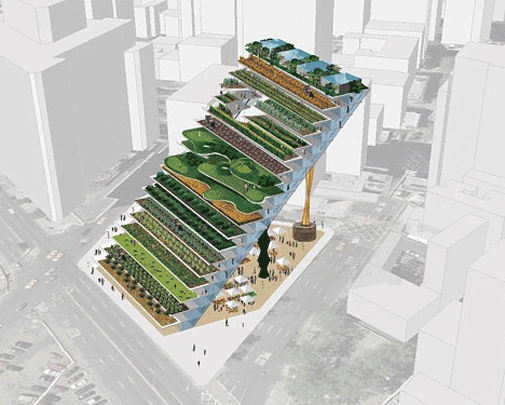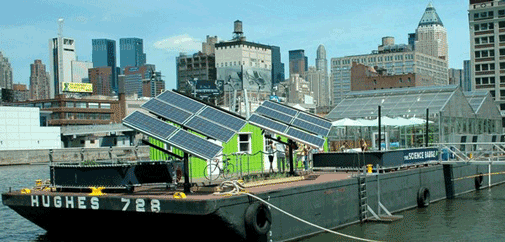
Rising oil and commodity prices, global warming, and population growth all contribute to a problem us more affluent Americans are sure as of yet to be affected: food shortage. 50% of the world's population living in urban areas has forced us to rethink current practices of food production and delivery. Not only are production problems a concern, but environmental impacts. Modern farming is the largest consumer of both land and water as well as a primary source of water pollution. One burgeoning trend adopted by a growing number of cities is Urban Agriculture.
Urban Agriculture (UA) can take on several concepts, but the basic idea is to grow produce in an urban setting, in return reducing food travel miles and associated environmental impacts. Great in theory, but urban land values hardly constitute low-yielding organic farming use. However, modern hydroponic techniques present an efficient, cost effective, and sustainable means for food production on or in building within an urban setting.

The green houses used for hydroponics maintain a constant temperature, which allows four seasons of growth. This needed heat however requires energy. Fortunately buildings inherently produce heat through the roof, which is absorbed and utilized by the green houses while simultaneously reducing the buildings heat island effect. Green houses are relatively light, so their placement on rooftops are not a structural issue. And in addition to heat absorption they also absorb carbon dioxide from building ventilation systems as well as capturing rainwater, reducing stormwater runoff.

Hydroponics are efficient enough that for every 2.47 acres used, it reduces farm use for rural land 24.7 acres. But even with this efficiency opponents doubt UA's ability to replace the vast quantities produced by rural commercial farms. Another argument is that not all building types are suitable for affixed rooftop greenhouses, which would not provide adequate coverage for high yields.
Still, successful projects like The Science Barge in New York City and the in-development Brightfarm Systems demonstrate how agriculture can be effectively integrated into our urban infrastructure. As we're seeing in many parts of the world, it looks like we'll need it.


